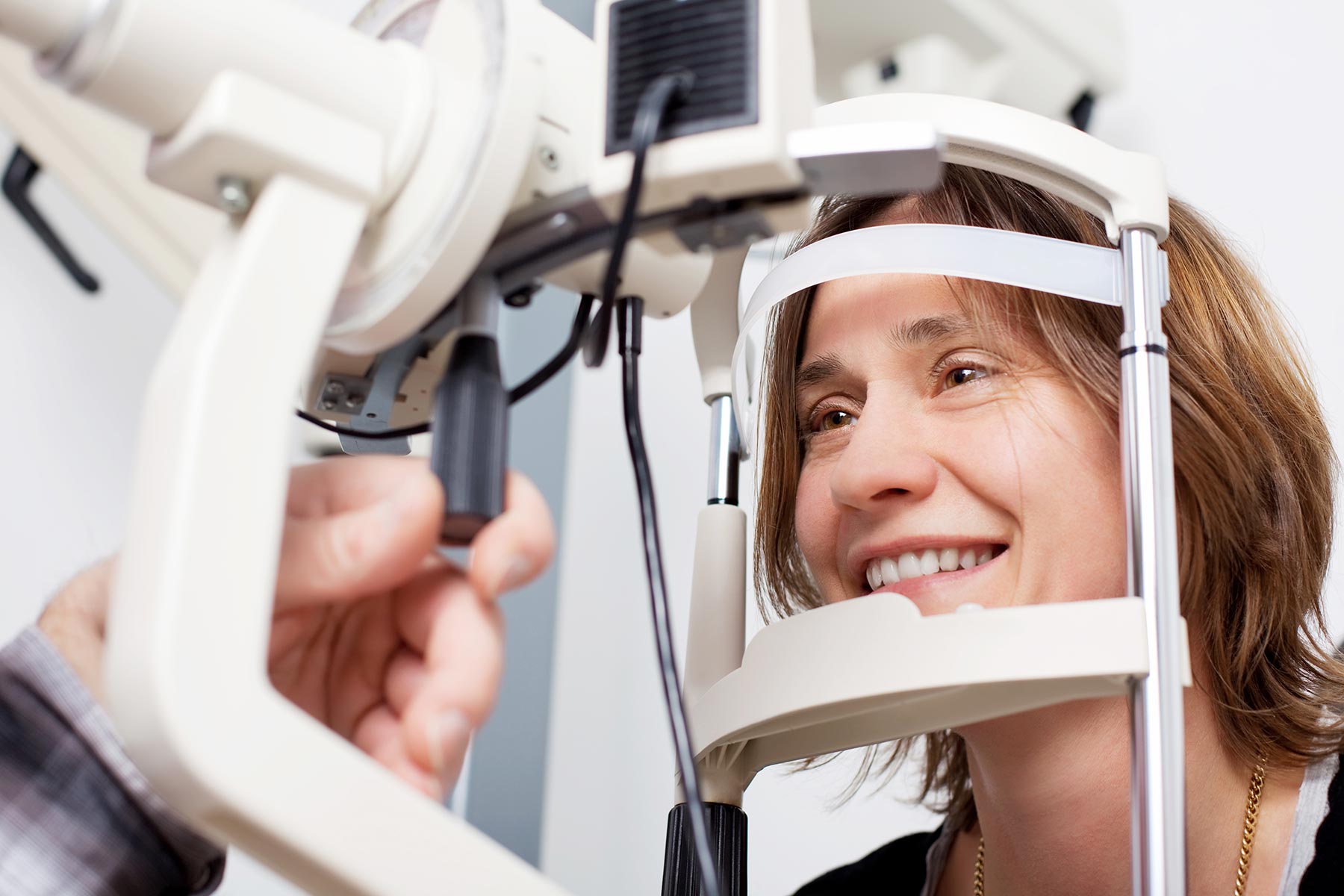Cornea Services
What is the Cornea Part of the Eye?
The cornea is the window and outer surface of the eye. When you are interpreting an image, light travels through the cornea past the lens to the retina and then the brain to form a visual image. The normal corneal surface is smooth and aspheric and flattens towards the edges. Light rays passing through it moves in an undistorted manner to the retina to project a clear image to the brain. This is the typical normal working cornea.

Our Cornea Trained Ophthalmologist

Dr. Kevin Cronin is a board-certified ophthalmologist from Sarasota, Florida. He received his Bachelor of Arts from Princeton University and his Doctor of Medicine from Wake Forest University. We are fortunate to have one of the best cornea trained doctors in Jacksonville right here in our practice. If you have been previously diagnosed with cornea problems, such as ocular allergies, pterygium, dry eye syndrome, keratitis, or keratoconus and are seeking a second opinion now is a great time to come in for an eye appointment.
What is a cornea specialist?
A cornea specialist is an ophthalmologist who has undergone additional training and study of the cornea structure, diseases and related surgeries. Having an experienced cornea specialist ophthalmologist can increase the chances of a successful cornea surgery outcome.
Common Cornea Problems
Minor Injuries & Scrapes
The cornea is often subject superficial scrapes or foreign bodies embedding inside the cornea, after all it is the outer surface of the eye. Without proper eye protection the eye is also subject to a wide range of potential injuries including corneal lacerations. A scrape on the eye is often diagnosed as a corneal abrasion and are usually not visible but an ophthalmologist or corneal specialist can see this with a slit lamp.
Ocular Allergies
If you have allergies, your eyes react to things that aren’t really harmful, like pollen. It releases histamine, a chemical that causes swelling and inflammation. The blood vessels in your eyes swell and your eyes get red, teary, and itchy. Pharmaceutical treatments often include antihistamines, mast cell stabilizers, and occasionally, corticosteroids. These can be prescribed for ocular allergies by Jacksonville Eye Center
Pterygium
Also called surfers eye, pterygium is a visible growth that occurs on the corneal surface originating out from the conjunctiva. A pterygium is a benign, non-cancerous growth, but can have a resemblance to cancer. If cancer is a concern, we can order testing to examine this growth. You are more likely to get a pterygium if you work and spend a lot of time outdoors. Pterygium usually develops in a hot climate with long-term exposure to sunlight.
Keratitis
Keratitis is a corneal infection with corneal inflammation caused by bacteria or viruses. Keratitis is a serious ocular disease that can lead to many complications if not treated early, including corneal scarring and even blindness. Patients with keratitis should be evaluated and treated promptly by a cornea specialist. In cases of potential keratitis please request to speak with Dr. Cronin directly.
Keratoconus
Keratoconus is a very slow progressive eye condition that affects the cornea. The normally round, dome-shaped cornea weakens and thins, causing a cone-like bulge to develop. The regular curvature of the cornea becomes irregular, resulting in increasing nearsightedness (myopia) and astigmatism that have to be corrected with special glasses or contact lenses. Since the cornea is responsible for refracting most of the light coming into the eye, corneal abnormalities can result in significant visual impairment, making simple tasks like driving or reading books.
Symptoms of Keratoconus (EYE FACTS AAO worksheet, 2010)
Corneal Lacerations
A corneal laceration is a cut on the cornea that is typically much worse than a scrape and sometimes can span the entire thickness of the cornea. these lacerations are typically caused by something sharp flying into the eye or some sharp that strikes the eye. Treatment for corneal lacerations usually require surgery to prevent further damage to the eye and to remove any foreign object remaining in the eye, and to prevent vision loss.
Dry Eye Syndrome
Many people will tell you that they have no problem producing tears during a sad movie or when the get upset over a tragic event. A large percentage of our population are unable to create tears when they are not crying. These people that cannot produce tears suffer from a chronic condition called dry eye syndrome. If you have this problem or feel like there is an irritating thing in your eye you may suffer from dry eye syndrome. Up to 12 million Americans suffer from a disease called dry eye syndrome. People with dry eyes frequently experience burning and stinging of their eyes, their eyes often feel sticky, and their eyes are often red. Interestingly, some people with dry eyes actually have periods when their eyes get so watery that tears spill over their eyelids and run down their cheeks.
Cornea Treatment Options
Corneal Transplants
A corneal transplant is a surgery that treats a multitude of corneal diseases. Corneal transplant is generally used as a last resort, after other treatments do not work to improve corneal disease. Corneal transplant surgery involves the removal of a patient’s diseased or damaged cornea and replacing it with a healthy donor cornea.
Healing After Corneal Transplant
The healing process following transplant is long, often taking a year or longer. The time from surgery to the removal of the stitches is commonly 6 to 17 months. The patient may be on steroids for months. Initially following surgery, the donor button is swollen and even following healing the button is usually thicker than the corneal bed in which it rests. The photo on the left shows a thick white ring of scarring between the donated button and the patient’s outer cornea. The white radial marks are where stitches were placed to hold the transplant in position. According to the American Academy of Ophthalmology (AAO), Graft rejection reactions occur in 11% to 18% of the patients.
DSEAK
DSAEK (Descemet’s Stripping Automated Endothelial Keratoplasty) is a corneal transplant technique where the unhealthy, diseased, posterior portion of a patient’s cornea is removed and replaced with healthy donor tissue obtained from an eye bank. Unlike traditional corneal transplant surgery, the DSAEK procedure utilizes a much smaller surgical incision and requires no corneal sutures. DSAEK usually results in more rapid visual recovery and also reduces the risk of sight threatening complications that may occur with a corneal transplant, such as intraoperative expulsive hemorrhage or post-operative traumatic would rupture.
Contact Us Immediately in Matters Relating to the Cornea
Our Jacksonville Eye Center eye doctors can determine whether your cornea is being affected by Corneal Abrasion Scrapes, Keratitis, Dry Eye, Corneal Dystrophies, Keratoconus, Fuchs’ Dystrophy, Dry Eye Syndrome, Ocular allergies, Herpes Zoster or Simplex, or other eye disorders that affect the eye and cornea. If you require the services of a cornea specialist in Jacksonville Dr. Cronin is ready to meet you.


